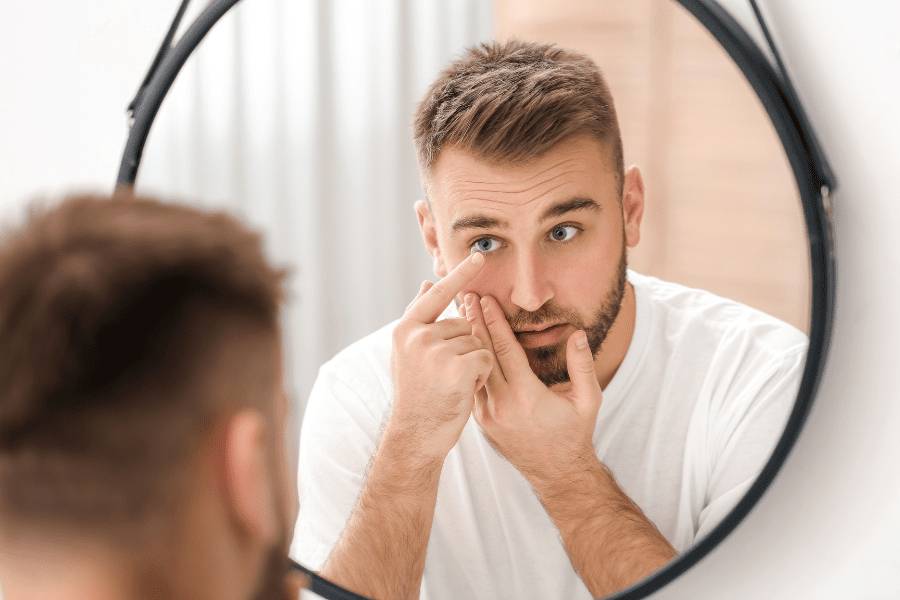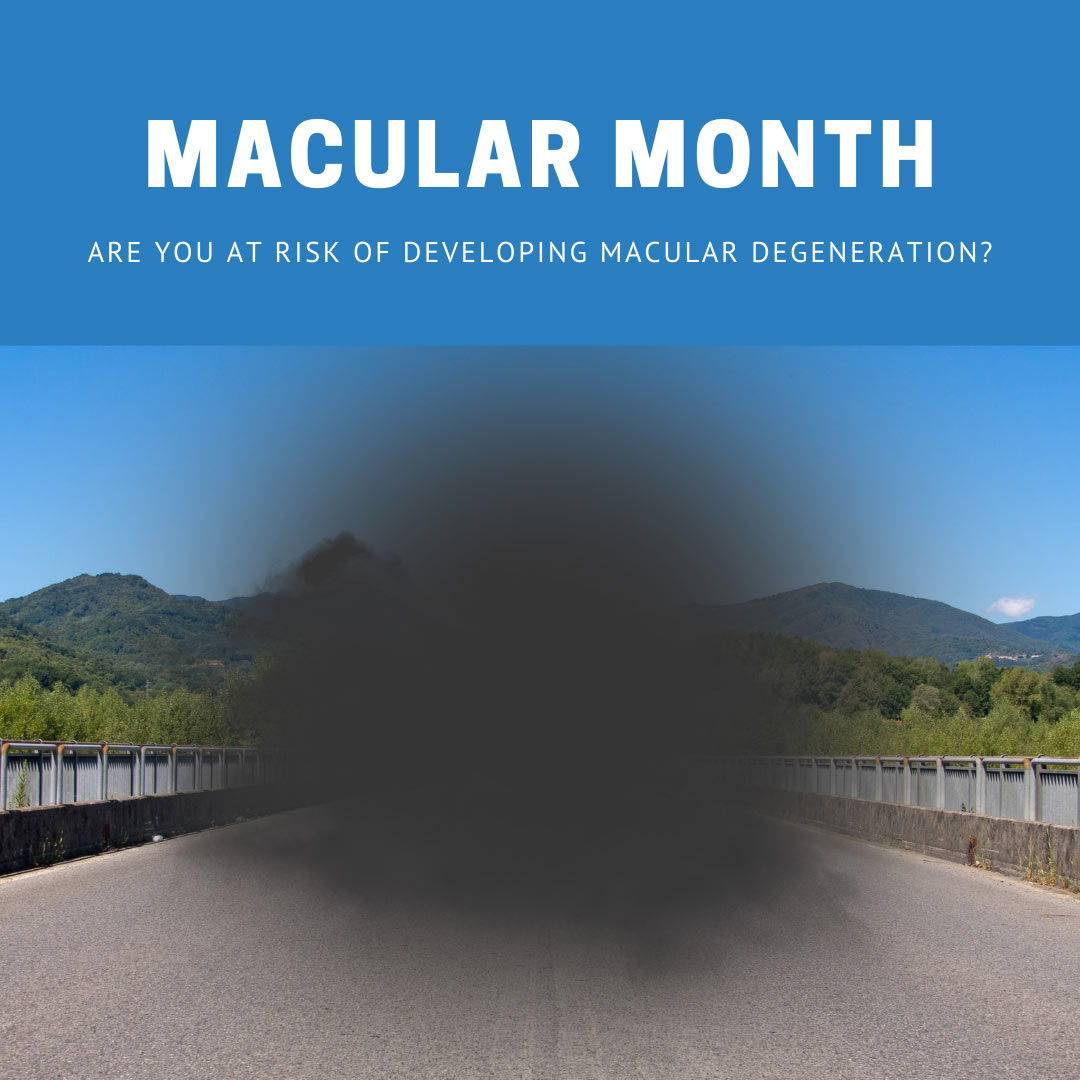Importance of polarised lenses
It’s summer 2022, the sun is out and there is no doubt that we are all spending more time outdoors after two years in doors. With increased levels of sun exposure, it is critical that we continue to protect our eyes.
Polarised sunglasses are a great option for anyone who spends time outdoors. They are great for high-glare activities such as being on the water. Polarised lenses help reduce glare and provide additional clarity whilst protecting your eyes.
Polarised sunglasses have changed and improved immensely over the years, with newer technology now offering lower distortion to eliminate the swim effect. High-definition polarised lenses also reduce vibration, enhance clarity, allow for faster adaptation and minimise eye fatigue. When considering polarised lenses, it’s important to also consider UV protection.
There is also now a variety of colours in polarised lenses and a large range of fashionable frames on offer. So why not update your look this summer whilst still giving your eyes the best form of eye protection by wearing polarised sunglasses.
Visit our practice and chat to us about polarised lenses and what options might suit your lifestyle.
Until Feb 28, 2022 - get $100 off a pair of sunglasses when you buy specs.*
*Redeemable with the purchase of a complete set of frames and lenses until Monday February 28, 2022. Sunglasses can be prescription or non-prescription. Not to be used in conjunction with any other discounts, packages or offers. Not redeemable on contact lenses. Valid once per patient only.

Holiday Trading Hours
Holiday Trading Hours
Our practice will be closed from Thursday, December 23 and will re-open Tuesday, January 4.
On behalf of everyone at Visual Eyes, we would like to wish you all a safe and happy holiday season.
Top 10 Contact Lens Tips
Remember when you first started wearing contact lenses? You may have found it was a little daunting in the beginning. The process of inserting and removing the lenses, getting comfortable touching your eyeball and then there’s all the hygiene protocols to follow. Along the way it’s easy to forget the “must dos” for good eye health and vision. So to help you out we’ve compiled our top ten tips for contact lens wearers – you’re welcome.
- Wash your hands before touching your lens
If you don’t, you risk cross contamination by depositing microorganisms from your hands to the lens thus increasing your risk for infection. You could for example, end up with conjunctivitis or a more serious corneal infection, which can increase the risk of permanent vision loss. When washing your hands, use a disinfected soap and dry them with a paper towel to avoid getting lint in your eyes.
- Check that your lens isn’t inside out and is not torn
Wearing the lens the wrong way generally won’t affect your vision but it may feel uncomfortable. Likewise, a torn lens can cause irritation so best to keep your fingernails short to help avoid accidentally ripping your lenses.
- Have eye drops on hand
Healthy eyes need to stay moisturised and contact lenses may make your eyes feel drier than usual especially if you are in air-conditioning. Your local EyeQ optometrist can recommend which eye drop will be best suited to your individual needs.
- Wash your case after each use
If you’re being totally honest with yourself, how often do you wash your contact lens case? (is that crickets we hear)? Contact lens cases are susceptible to bacterial growth which means if you’re not cleaning your case regularly you are likely creating a breeding ground for germs. Best practice suggests disposing of the old solution, rinsing it out with fresh solution, wiping it with a clean tissue or paper towel and leaving it to air dry face down with the caps off.
- Replace your case regularly
Even if your case looks brand spanking new it’s really important to replace it every three months. A biofilm can form in your case helping bacteria hide from the disinfectant in your contact lens solution which again doesn’t support healthy eyes.
- Store your contact lens case in a clean, low humidity environment
While it makes practical sense to keep your contact lenses in the bathroom it’s probably not the best idea (how super impractical)!
You may be surprised that cultures of contact lens cases have found faecal matter in them, which occurs when the case is kept in the bathroom without the lens caps on, flushing the toilet creates a mist of spray that settles inside the case, yuck!
- Only wear your contact lenses for the recommended time
Follow your optometrist’s instructions regarding the length of time to wear and use your lenses. For example, if the lenses are designed to be replaced every month don’t wear them for two. Your risk of serious eye infections increases if you overwear your contacts.
- Don’t sleep in your contact lenses
Unless your optometrist has advised you to do so it’s important that you don’t ever sleep in your contact lenses. Doing so drastically increases your risk of eye infection. The contact lens limits your eyes from getting oxygen and hydration which it needs to fight off any microbial invasion.
- Insert your contact lenses before applying make-up
Once you’ve washed your hands you should insert your contacts before applying moisturiser or make-up. It’s easy for any residue left on your fingers to make its way into your eyes or onto your contact lenses.
- Consider daily disposable lenses
There are two major benefits to wearing daily disposable contact lenses. Firstly, they are super convenient as no lens cleaning or maintenance is required. You literally wear your lenses for the day and throw them out once removed. Bye-bye contact lens cases!
The other and more significant benefit is that daily contact lenses are healthier for your eyes as there’s a decreased risk of corneal infection.
Make an appointment to speak to our optometrist regarding your contact lens wear and cleaning practices if you have any questions or concerns.
Are your devices causing you digital eye strain?
Have you been noticing that your eyes are more irritated and tired than usual? You’re not alone. For most of us, digital devices have a strong and growing presence in our lives. Computers, tablets, smartphones and other electronic devices with visual displays can all cause tired eyes and digital eye strain, referred to as ‘computer vision syndrome’.
What is computer vision syndrome?
Computer vision syndrome is the name for a group of eye and vision symptoms that might be experienced as a result of viewing digital devices for an extended period of time.
These symptoms can include eye strain, red or tired eyes, irritation, blurred vision, double vision and headaches.
Why does screen time irritate the eyes?
For most of us, our eyes prefer to focus further than six metres away, so viewing a computer screen forces our eyes to work harder. While it’s normal for us to blink about 15 times a minute, studies have shown that we blink far less often while using digital devices resulting in dry, scratchy and red eyes.
Generally speaking, the type or font that we are viewing on a digital device can be small or unclear, and glare is emitted off the screen from the blue light. The frequency of blue light emitted from LED devices is also being researched for its long-term effects on the eye and potential impact on altering sleep cycles.
The combination of these unique characteristics, and our eyes having to work harder, can often lead to difficulty. The extent to which people experience visual symptoms often depends on the level of their visual abilities and the amount of time looking at a digital screen.
Extended periods of focusing on screens up close results in the muscles having to exert significant focusing effort to make these objects clear. As with any of the muscles in the body, they can fatigue and tire out if not given the opportunity to occasionally rest and relax. The muscles which control eye movements and focusing are typically relaxed when we look at objects in the distance.
What to do to combat computer vision syndrome
It can be hard to remember to rest our eyes, but we should all apply the 20-20-20 rule when spending time on devices. The 20-20-20 rule is shifting your focus to something other than your device every 20 minutes. Then what you focus on should be 20 feet (6 meters) away and you should look at it, for at least 20 seconds.
Let’s all remember to apply the 20-20-20 rule daily so our eyes can stay at their best for longer.
If you are still experiencing eye strain or irritation, it is best to consult your optometrist to discuss the best treatment options for you. Book an appointment easily online today.
The Impact of COVID-19 on Eye Health
COVID-19 infected persons may develop conjunctivitis, which is characterised by sore, red, watery eyes. The eye can be a transmission route forCOVID-19 if a contaminated hand touches or rubs the eye, so it’s of vital importance to wash your hands and avoid touching your face.
How does COVID-19 spread?
The COVID-19 virus is primarily spread via person-to-person contact, through the release of respiratory droplets when an infected person breaths, coughs, or sneezes. It can also be spread via indirect contact, for example if a person touches the same object as an infected person, and then touches their mouth, nose or eyes. COVID-19 is highly infectious and spreads easily from person to person.
People who are infected but do not show symptoms can also spread the virus to others. On average it takes 5–6 days from the time of infection for symptoms to show, however it can take up to 14 days.2 How easily a virus spreads from person to person can vary.1 The virus that causes COVID-19 appears to spread more efficiently than influenza but not as efficiently as measles, which is among the most contagious viruses known to affect people.
Can COVID 19 affect your eyes?
Yes. The World Health Organisation (WHO) has classified conjunctivitis as a less common symptom of COVID 19 infection.1 Conjunctivitis is an infection or inflammation of the conjunctiva, the clear tissue which covers the white part of the eyeball.
Cases of conjunctivitis vary from 4% to 31% among those with a confirmed case of COVID.4 Signs of conjunctivitis are typically red, sore, watery eyes. This can be accompanied by itchiness and light sensitivity.
Conjunctivitis is a common condition overall with many causes including bacteria, allergens and viruses, so your Optometrist is well trained to lookout for the signs of COVID related conjunctivitis.
Can COVID-19 be transmitted via the eyes?
Yes, although attaining COVID 19 infection through the eyes is much less common than through the nose or mouth. The eye is more likely to be infected secondary to the primary infection, i.,e a contaminated hand touches or rubs the eye.3 This is why good hand hygiene is so important.
Prevention
To prevent infection and slow the transmission of COVID-19, the following is recommended:
- Practice physical distancing by avoiding unnecessary travel, and staying away from large groups of people, especially those with cold like symptoms i.e. coughing or sneezing
- Wash your hands regularly with soap and water, or clean them with alcohol-based hand rub
- Wear a mask when possible
- Avoid touching your face
- Cover your mouth and nose when coughing or sneezing
- Stay home if you feel unwell
Take home messages
COVID-19 infected persons may develop conjunctivitis, which is characterised by sore, red, watery eyes. Your eye care professional will be on the lookout for any such presentation and take necessary steps to prevent the spread of the disease. The eye can be a transmission route for COVID-19 if a contaminated hand touches or rubs the eye, so it’s of vital importance to wash your hands and avoid touching your face.
References
1 World Health Organisation, “COVID-19 Clinical management: living guidance,” 2021.
2 Australian Government - Department of Health, "What you need to know about coronavirus (COVID-19)," 2021.
3 Pradhan S, Vaughan M, Zhang J, et al Sore eyes as the most significant ocular symptom experienced by people with COVID-19: a comparison between pre-COVID-19 and during COVID-19 states. BMJ Open Ophthalmology 2020;5:e000632. doi: 10.1136/bmjophth-2020-000632
4 Dawood AA. Transmission of SARS CoV-2 virus through the ocular mucosa worth taking precautions. 2021;22(1):56-57. doi:10.1016/j.vacune.2021.01.007
Why do my eyes hurt in the cold?
One very common and frustrating eye issue that increases in its prevalence over winter is dry eye. The colder temperature can cause your eyes to lose natural moisture, becoming dry and sore. Although this isn’t usually a serious condition, it can cause discomfort. Here are out top tips to ease the symptoms of dry eye and keep your eyes healthy this winter.
May is Macular Degeneration Awareness Month
inFOCUS this month... an annual awareness campaign to help Australians understand their risk of macular disease. May is Macular Degeneration Awareness Month.
Macular disease covers a range of painless conditions affecting the central retina, known as the macula, which sits at the back of the eye. This disease is unfortunately the leading cause of vision loss and blindness in Australia.
The macula is responsible for detailed central vision used for activities such as reading, driving and recognising faces. It’s also responsible for most of your colour vision and it is only early detection and intervention that will save your sight.
checkmymacula.com.au offer a quick quiz to assess your risk however the best course of action is to maintain regular eye checks and ensure you reach out to us if you notice any changes with your vision, especially when reading or driving.
School is back!
School is back and now is a great time to make an appointment to get your child's eyes tested either for the first time, or to get that review appointment that they may be due for.
Poor eyesight may cause learning and behaviour problems, which might be blamed on other things. This is especially true for young children, who may find it difficult to explain the difficulties they are having with their eyesight. They may not even be aware they have a problem at all.
Please book an appointment online or give us a call on 3899 4044.
We hope to see you soon.
Start the new year off with a fresh new look!
Start the new year off with a fresh new look! Many of the health funds re-set at the beginning of the year, so now might be a great time to use your new health benefits and enjoy little or no gap payment! Book an appointment online or visit our practice today a choose from our range of stylish spectacles.









